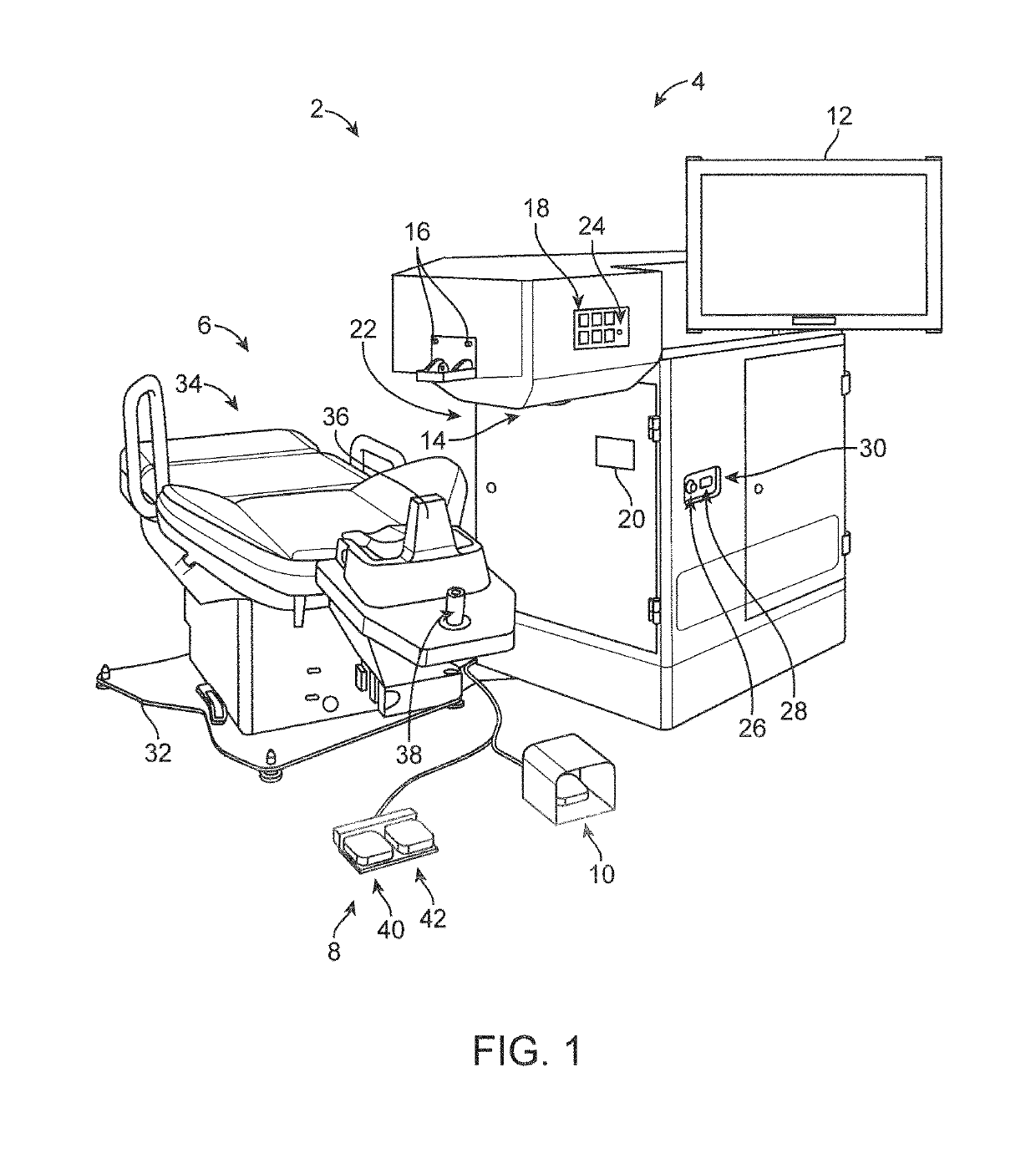Vacuum loss detection during laser eye surgery
a laser eye and vacuum loss technology, applied in the field of surgery, can solve the problems of low surgical efficiency, unsatisfactory prior methods and equipment, and high pulse repetition rate, and achieve the effects of improving the response time of coupling sensors, safe and effective retention, and rapid measuremen
- Summary
- Abstract
- Description
- Claims
- Application Information
AI Technical Summary
Benefits of technology
Problems solved by technology
Method used
Image
Examples
Embodiment Construction
[0032]Methods and systems related to laser eye surgery are disclosed. In many embodiments, a laser is used to form precise incisions in the cornea, in the lens capsule, and / or in the crystalline lens nucleus. Although specific reference is made to tissue retention for laser eye surgery, embodiments as described herein can be used in one or more of many ways with many surgical procedures and devices, such as orthopedic surgery, robotic surgery and microkeratomes.
[0033]The embodiments as describe herein are particularly well suited for treating tissue, such as with the surgical treatment of tissue. In many embodiments, the tissue comprises an optically transmissive tissue, such as tissue of an eye. The embodiments as described herein can be combined in many ways with one or more of many known surgical procedures such as cataract surgery, laser assisted in situ keratomileusis (hereinafter “LASIK”), laser assisted subepithelial keratectomy (hereinafter “LASEK”).
[0034]Methods and systems...
PUM
 Login to View More
Login to View More Abstract
Description
Claims
Application Information
 Login to View More
Login to View More - R&D
- Intellectual Property
- Life Sciences
- Materials
- Tech Scout
- Unparalleled Data Quality
- Higher Quality Content
- 60% Fewer Hallucinations
Browse by: Latest US Patents, China's latest patents, Technical Efficacy Thesaurus, Application Domain, Technology Topic, Popular Technical Reports.
© 2025 PatSnap. All rights reserved.Legal|Privacy policy|Modern Slavery Act Transparency Statement|Sitemap|About US| Contact US: help@patsnap.com



